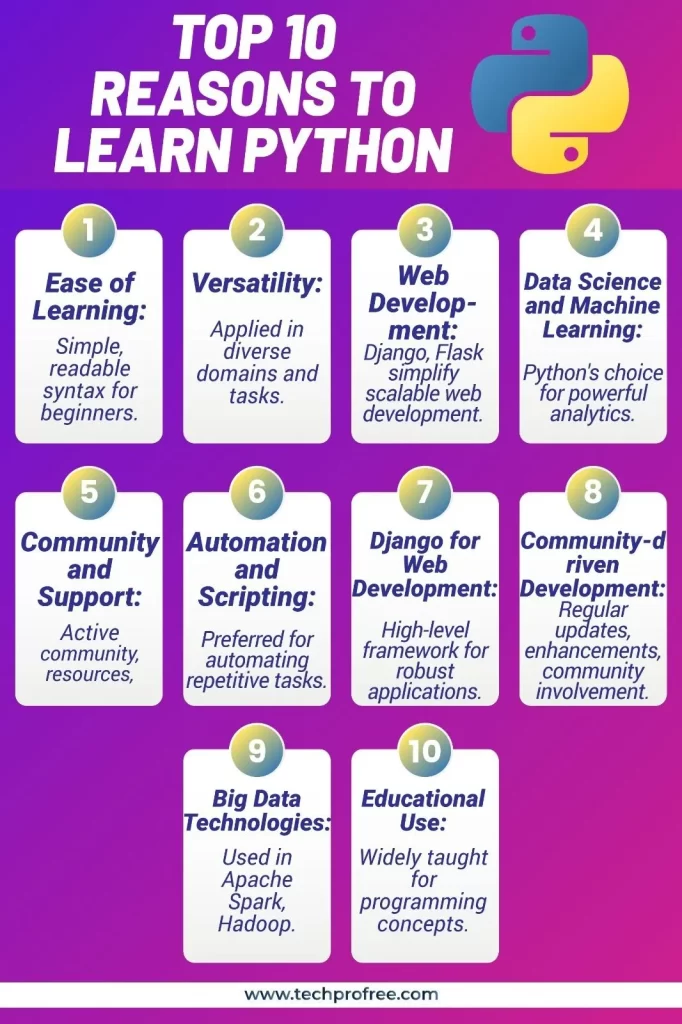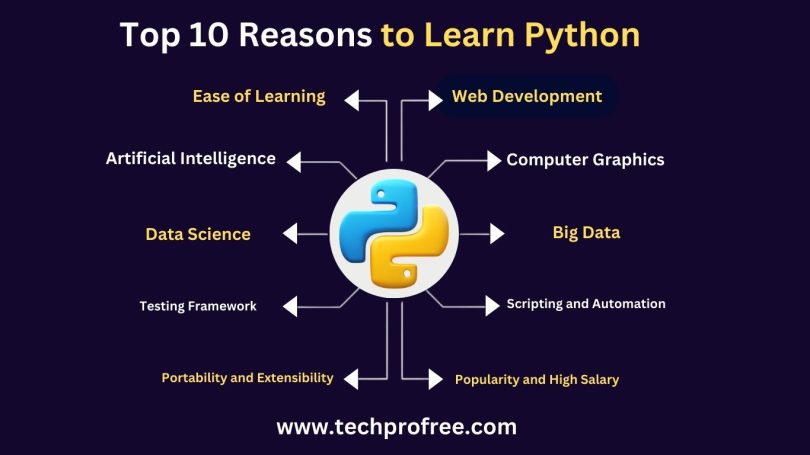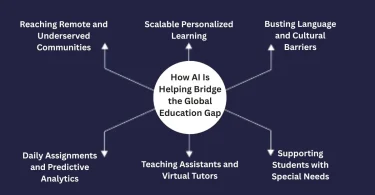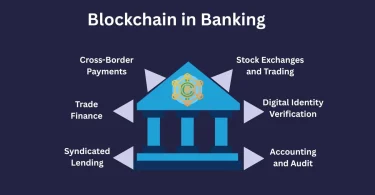Exploring the Top 10 Reasons to Learn Python Programming in Career Development
Introduction
Do you want a promising career with long-term prospects?
Getting good at Python programming can be the best way to achieve such goals. This discourse seeks to discuss the various benefits of learning Python, which plays an integral role in the data science that is rapidly growing.
The increased demand for Python programmers due to the constant development of machine learning applications highlights the importance of developing this programming language a lot.
Reasons to Learn Python
Python has managed to take one of the top three places worldwide and signs point out that it could soon become the most popular language. PYPL Index designated Python as the most popular programming language in the world nowadays, and this means that an aspiring professional can expect employment opportunities abroad not only within his or her country but also in Switzerland or Australia.
Secondly, Python is a generalized skill that has many applications in many fields including data science, scientific and mathematical computing, web development finance trading system automation administration computer graphics basic game development security penetration testing scripting and mapping/geography (GIS software). As for the choice of specialization, it depends on personal preferences, data science, game development, finance, or even security and many other interesting things.
Top 10 Reasons to Learn Python : Python Programming Benefits
It is in the dynamic world of programming languages that Python has become one of the most widely used and desired options. Standing over many languages such as Java and C, Python has conquered its position on the throne of popularity which is demonstrated by a recent Stack Overflow survey. Here we list the ten best reasons to venture on Python learning, highlighting its rising importance in the modern labor market. Here’s List of Python Programming Benefits Given Below
1. Ease of Learning
Python is easy to learn due to its impressive simplicity and learnability. This interpreted, an open-source programming language that closely resembles the English language is very much suitable for beginners. The favorable learning environment results from the clear syntax and also a supportive community.
2. Portability and Extensibility
The portability and scalability of Python enable the smooth cross-language operations. Supported on Windows and Linux including Macintosh and Solaris as well as Play Station, Python is integrated with Java and NET components for invocation of C and C++ libraries.
3. Web Development
Python’s dominance in web development (using frameworks such as Django, Flask and Pylons) highlights its ability to produce faster and also more reliable code. Some of the notable websites such as “Instagram”, “Bitbucket”, and also “Pinterest” use these frameworks. Python is also very good at web scraping and it allows data collection from various websites.
4. Artificial Intelligence
Python is revealed to be one of the leading AI players because it imitates the human brain processes. Libraries such as “Keras” and “TensorFlow” integrate machine learning capabilities, allowing for learning without the need to do any program. Also, Python offers the computer vision and image recognition using such libraries as “OpenCV”.
5. Computer Graphics
Python can be used in projects of different sizes, online or offline; it really helps to create Graphical User Interface (GUI) and also desktop applications. The “Tkinter” library makes it much easier to create applications quickly and in the world of game development, the “pygame” module allows for logic implementation on platforms such as the Android device.
6. Testing Framework
The testing frameworks that are robust in Python such as “Selenium” and “Splinter” make it an ideal option for validating ideas and products. With tools such as “PyTest” and the Robot Framework, cross-platform and cross-browser testing is made possible to improve efficiency significantly with the process flows for testers also becoming faster.
7. Big Data
Python can also be used for Big Data, which involves parallel processing and also “Hadoop” integration. Libraries such as “Pydoop”, “Dask” and “Pyspark” allow Python to handle the massive datasets and analyze them very easily which is why it is one of the most popular languages in Big Data.
8. Scripting and Automation
Python also acts as a scripting language that enables the development of scripts for the automatic execution. This code, written in the script form, is interpreted by the machine which allows for error checking during runtime and also helps with the reusability.
9. Data Science
Data scientists prefer using Python over traditional languages such as “MATLAB”. Python efficiently processes the tabular, matrix and also statistical data with the help of numerical engines such as “Numpy” and ‘Pandas’, visualizing through libraries such as “Matplotlib” and also “Seaborn”.
10. Popularity and High Salary
The dominance of Python is helped by its growing popularity and also the high salaries that are paid to the engineers using Python. In the United States, the average salary of a Python Developer is about $120,000 annually and such popularity has increased sharply in the past years.

Conclusion
Learning to use Python is not only the acquisition of a very useful tool, but it also means opening doors for endless possibilities in the expanding world of technology. Ranging from molding the future of data science and AI to creating engaging visuals and automation for rote tasks. With Python, you become an in-demand creator and a solutionist. With this language’s stratospheric ascension, appreciating its adaptability takes you to lucrative jobs in a variety of different industries; from web development and finance to scientific computing and game design.
Comparing Python with R Across Key Development Domains
| Feature / Domain | Python | R |
| Ease of Learning | High – simple syntax, beginner-friendly | Moderate – syntax specialized for statistical computing |
| Data Science & AI | Excellent – widely used with strong libraries (e.g., Pandas, Scikit-Learn, TensorFlow) | Excellent – designed for statistical analysis |
| Web Development | Good – with frameworks like Django, Flask | Limited – not typically used for web development |
| Machine Learning | Excellent – popular for ML with TensorFlow, PyTorch | Good – some libraries (e.g., caret, randomForest) |
| Desktop GUI Development | Moderate – Tkinter, PyQt, Kivy | Limited – not designed for GUI applications |
| Community Support | Large – very active, diverse, and supportive community | Moderate – active, though more niche for statistics |
| Enterprise Solutions | Good – used in data-focused roles within enterprises | Limited – specialized for data but not full enterprise |
| Cross-Platform Portability | High – interpretable on many platforms | Moderate – cross-platform but mostly for data analytics |
| Performance Speed | Moderate – interpreted, can be slower but optimized with libraries (NumPy, Cython) | Low – slower, as it’s optimized for statistical analysis |
| Use in Academia | High – commonly used in education and research | High – popular in academia for data science and statistics |




Leave a Comment